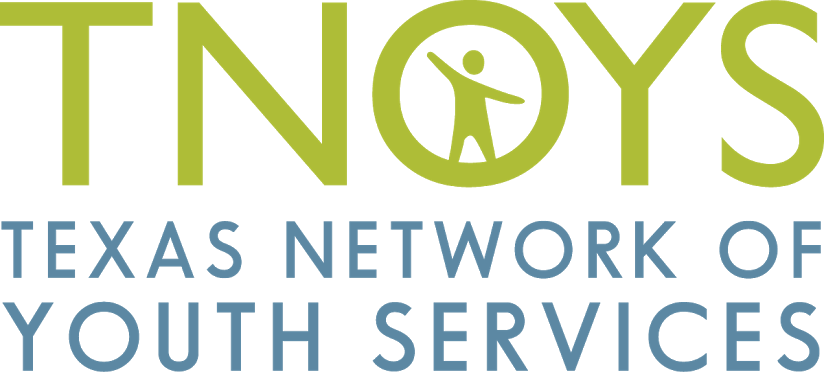This post was authored by Alex Polk, as a follow-up to his previous piece on supporting LGBTQ youth. In researching this post, Alex drew from his own experience as an advocate, as well as multiple conversations with youth who identify as transgender and have lived experiences with homelessness.
 Here at TNOYS, we’re encouraged by the many providers in our community that offer welcoming, supportive homeless services for youth who identify as transgender. Sadly, these youth are often vulnerable to situations that lead to homelessness and housing instability. According to The National Coalition for the Homeless, nearly 1 in 5 transgender individuals have experienced homelessness, and transgender youth tend to spend a longer period of time being homeless than their straight, gay, lesbian, or bisexual peers.
Here at TNOYS, we’re encouraged by the many providers in our community that offer welcoming, supportive homeless services for youth who identify as transgender. Sadly, these youth are often vulnerable to situations that lead to homelessness and housing instability. According to The National Coalition for the Homeless, nearly 1 in 5 transgender individuals have experienced homelessness, and transgender youth tend to spend a longer period of time being homeless than their straight, gay, lesbian, or bisexual peers.
As part of TNOYS’ mission to promote equity, this blog post aims to educate our community on the challenges that transgender youth face when seeking out shelter and services, and provide guidance on concrete steps to support them.
Challenges for Transgender Youth Experiencing Homelessness
When thinking through strategies to support transgender youth, it’s important to understand that these youth may feel distrustful and avoid services, due to negative experiences they’ve had in the past.
In my experience, this is a common theme with transgender individuals who have spent time in Texas shelters. Many of the youth I talked to told me that they went out of their way to avoid shelters due to harassment, discrimination, and even violence. Several reported being placed in shelters with those that match their biological sex, leaving them vulnerable to harassment. Others explained that they were isolated by staff and told that it was for their own safety, which led to these youth being singled out by peers.
Statistics support these youths’ perspective: Research from The National Coalition for the Homeless shows that 55% of transgender individuals report harassment at shelters, and 29% have been turned away from shelters altogether. The consequences of this are severe —when shelters aren’t an option, transgender youth often feel that their only other alternatives are sleeping in cars or friends’ couches, under bridges, or even resorting to sex work, just to have a place to sleep for the night.
Creating a Welcoming and Safe Space
So how can service providers welcome transgender youth, especially those dealing with trauma from past experiences?
Fortunately, there are many ways to promote equity for transgender individuals at your organization. While this guidance is provided with shelters in mind, many of the principles are also relevant for providers of other types of services to youth and families. I encourage service providers to think through the following:
- What policies and procedures are in place to support transgender individuals?
- Are staff trained on issues and challenges that affect the transgender community?
- Does our organization display indicators of inclusivity?
- Is intervention in place when staff or parents behave disrespectfully?
There are also many steps that service providers can take to build a more inclusive environment:
Make small changes to welcome transgender youth
Transgender people need proof when they go into a shelter that they will be supported and respected. This can be as simple as putting a rainbow or transgender pride flag in the door of the facility as a visual note that they are welcome.
Ensure that basic needs are met
Keep the needs of transgender people in mind when distributing clothing and hygienic items. These needs may include gender affirming clothing, underwear, razors, or menstrual products.
Educate staff, and protect the confidentiality of youth
Ensure staff are educated on confidentiality laws and policies. DO NOT disclose information about the youth’s gender identity without their permission (don’t “out” them) —this can be a traumatizing experience for youth, especially if the place they’ve been outed to isn’t a safe one. It can also often be re-traumatizing for those who have been “outed” in a previous home/relationship. Disclosure of any information should be limited to what can specifically benefit the youth.
Make sure that intake is welcoming to transgender youth
Review all intake paperwork to make sure that it is supportive of transgender youth. If paperwork asks for a person’s birth name, make sure they have the option to also list their preferred name and preferred pronouns. And most importantly, allow individuals to decide placement based on their gender identity and where they will feel safest. Be sure to follow up with them discreetly to ensure they have been placed in a safe environment.
It is critical that transgender youth in crisis get the support and respect they deserve. Making small changes to support this underserved community ensures that transgender youth understand that they are heard, valued, and respected members of society.
